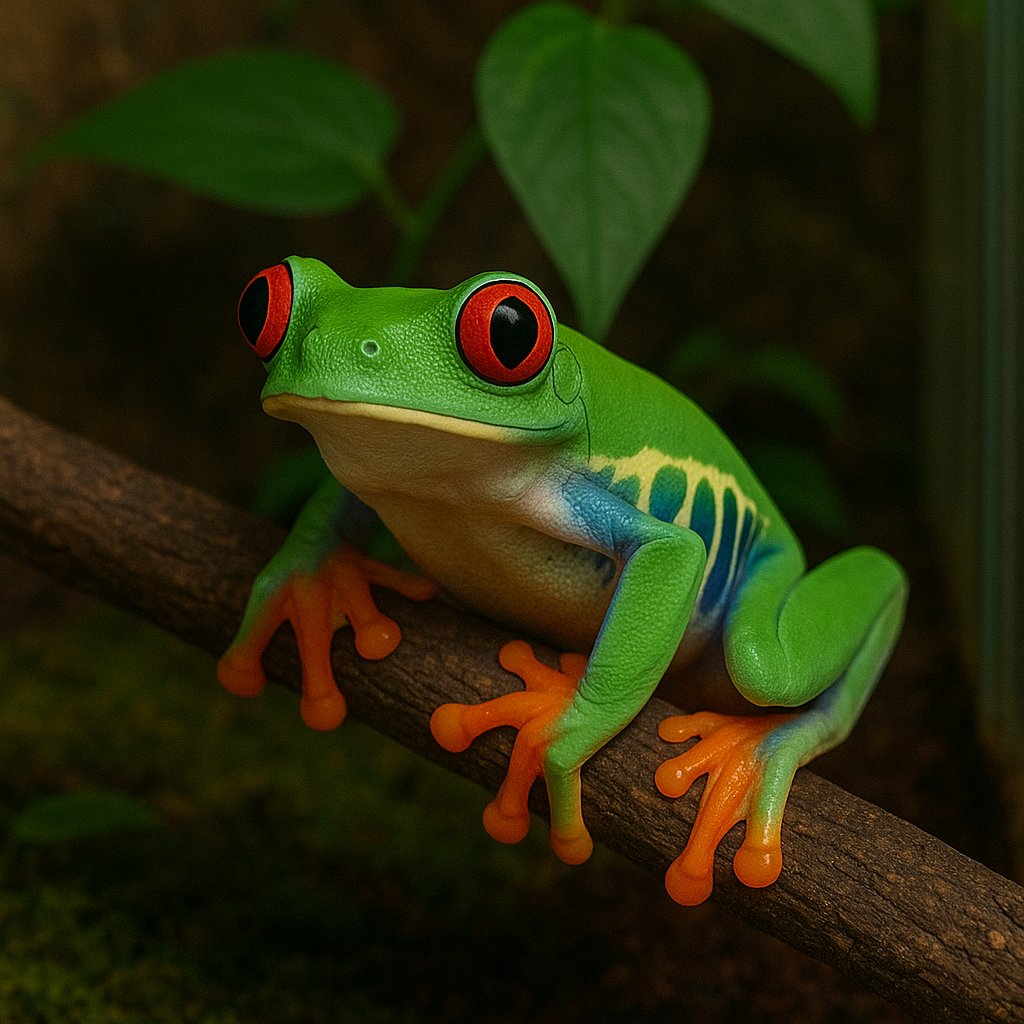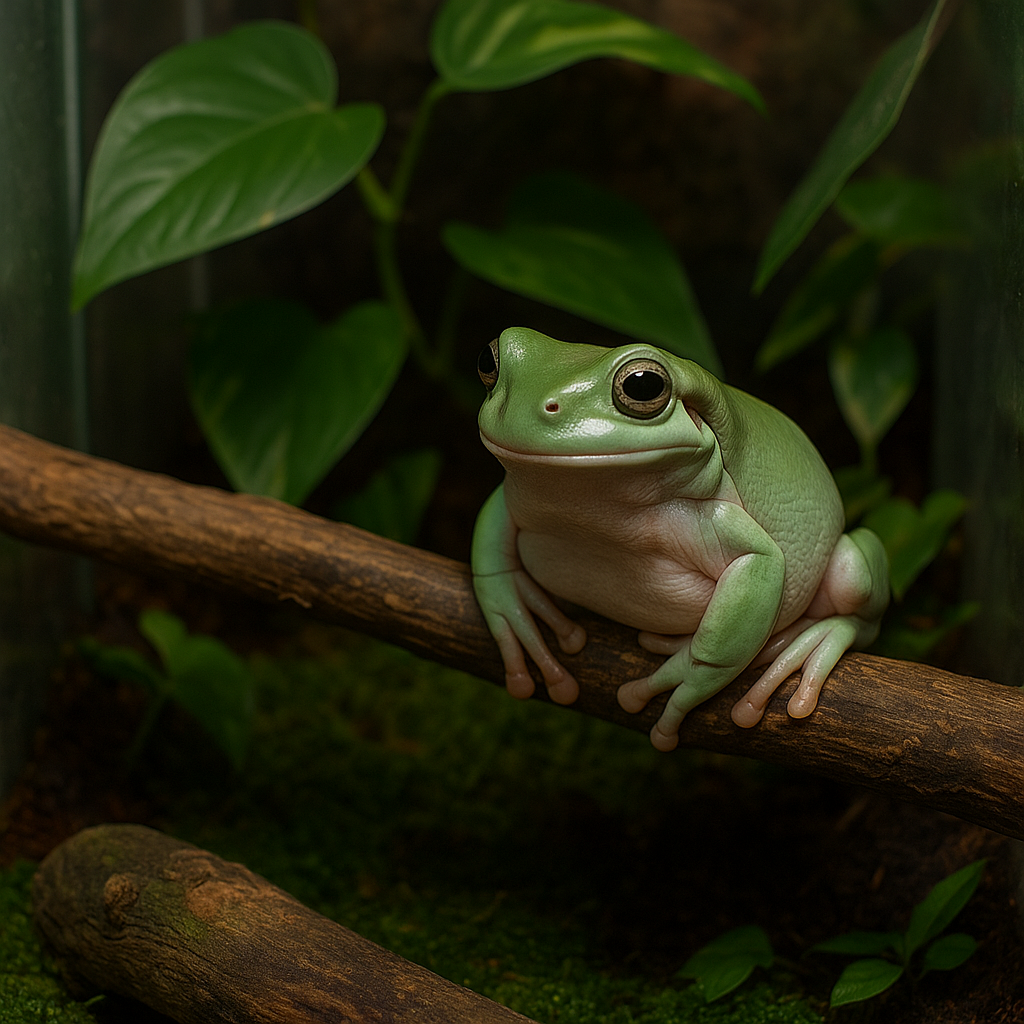When you build a vivarium, you often treat it like one environment: “humidity 85 %, temp 24 °C, plants covering 90 % of surfaces.” But in nature — and in a good vivarium — microclimates exist. Frogs hop from damp hollows to warm sun‑touch crevices, from cooler hideaways to more humid rims. Your job as a keeper is to pack those zones into your box.
UK keepers have a tougher job: rooms drop to 15–17 °C overnight in winter, and humidity wavers with central heating. So building internal gradients isn’t optional — it’s essential.
Why Microclimates Matter
- Behaviour & choice: Frogs can regulate their comfort by moving among zones (too cold? hop nearer heater zone; too wet? retreat to drier leaf litter).
- Health & stress reduction: A frog locked into one uniform environment may struggle under extremes.
- Breeding & micro‑preferences: Some species will only lay eggs in a very specific humidity or temperature niche.
Sites like Josh’s Frogs and Fantastic Frogs do a great job with general care guides, but don’t always break down how to layer zones within one tank. That’s where this guide picks up.
How to Build Micro‑Zones Inside Your Vivarium
1. Vertical & Horizontal Divisions
- Height gradients: Temps often rise 1–2 °C from base to canopy. Use cork walls or background to buffer airflow and create thermal layers.
- Sloped substrates: A slight slope from back to front or side to side helps create runoff zones and varied dampness.
- Partitioning: Add cork rounds or bark slabs to act as internal walls — still climbable but visually distinct.
2. Warm Zones (Your “Sunlit Patches”)
- Use a side-mounted heat mat hidden behind hardscape — cork bark, a clay wall, or rocks — to radiate gently.
- Let light play a role: your LED spotlight or daylight bar should hit one end more intensely.
- Place basking points under high canopy leaves, where frogs can still feel secure.
3. Cooler, Shadier Zones
- Create overhangs with driftwood or cork flats. These reduce airflow and retain damp.
- Position sphagnum moss and leaf litter in these zones to keep humidity higher.
- Use plants like ferns or Ficus pumila to hold shade.
4. Moisture Gradients & Misting Techniques
- Misting should never be uniform. Aim for patchy misting, using branch lines or directing nozzles into specific zones.
- A fogger works well in rear corners or near broms to simulate morning mist.
- Let runoff wick into the drainage layer (use 25 ppi filter foam!) and bleed out naturally.
5. Horizontal Zones (Front vs Back)
- Frogs will often retreat to back corners where airflow is lower.
- Place your most active, feeding-safe zone at the front.
- Use raised cork flats or vines to connect both — and allow the frog to navigate different conditions with ease.
Monitoring & Tuning
- Place at least two thermohygrometers: one low in leaf litter, one higher up.
- Log readings morning, noon and night for a week.
- Adjust lighting, mist duration, or heating timers to balance the environment.
Expect seasonal shifts — in the UK, autumn and spring often bring the biggest swings.
Mistakes to Dodge
| Mistake | Why It Hurts | Fix |
|---|---|---|
| Uniform heat or mist | No variation = no choice for frogs | Always create warm/cool, dry/wet spots |
| Floor heat mats | Overheats substrate, dries out zones | Use side-mounted mats only |
| Over-misting entire tank | Destroys gradients | Zone your mist output |
| Ignoring UK winter drafts | Can drop rear temps 3–5 °C | Insulate rear & side panels |



